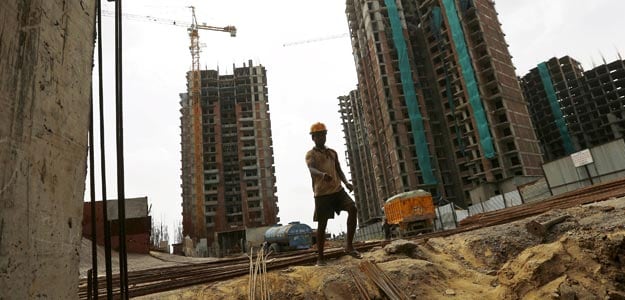
The growth forecast, highest by any house and even above the government’s own estimate of 7-7.75 per cent, has been arrived assuming a faster growth in agriculture, Crisil Chief Economist Dharmakirti Joshi said in a concall today.
The country has faced weather shocks for three consecutive years, including two years of deficient rains in 2014 and 2015, and a normal monsoon season this year can lead to a 4 per cent growth in agriculture on lower base effect, he explained.
Even though he flagged concerns on the banking front, Joshi said implementation of reforms should help the economy achieve higher growth and termed 2016-17 as the “year of reckoning” which has the potential to illustrate the path which the economy can take.
Joshi said oil and commodity prices are expected to remain soft, which will ensure that crucial macroeconomic indicators like fiscal deficit and inflation are as per expectations.
He termed the journey till now as a “modest recovery” helped by good luck and strong policy push, but highlighted the need to implement reforms faster. He also said the pick-up in private investment cycle should begin from the second half of the next fiscal year.
Welcoming the Budget as one with realistic growth and revenue targets, he said achievement of the divestment target, which the government has trailed in the past, will be keenly watched.
Calling the banking sector as the “hardest place”, Joshi said the overall weak assets, including gross NPAs and assets that are likely to slip into NPAs, will rise to 8.9 per cent or Rs 8 trillion, with state-run banks bleeding the most.
“Asset quality pressures will remain intense for the public sector banks through the next fiscal,” Crisil’s Business Head for large corporates Raman Oberoi said.
This, coupled with the limited room to raise capital, has resulted in the rating threshold for state-run banks going down by a notch to A-, which was last seen in 2004.
The government’s commitment on capital infusion is just enough to meet the minimum capital requirements as the banks migrate to the stricter Basel-III regime, Oberoi said, adding that factors like volatility in markets and investor aversion to AT-1 instruments only aggravate the trouble.
At the end of the current fiscal, he expects only 10 of the 26 state-run banks to meet the minimum core capital requirements as against 25 in FY15, and added the state-run lenders need Rs 1.7 trillion in capital by end of FY19.
With the introduction of the marginal cost of funding based base rate calculation, banks’ net interest margins are slated to get trimmed by 0.10 per cent, he said.
He also expects the PSU banks to notch up a credit growth of up to 11 per cent in FY17, with private lenders clocking 20 per cent.
Recent changes in capital recognition shall free up an additional Rs 37,000 crore of lendable capital for the system, while the UDAY scheme will free up another Rs 12,000 crore.
Corporates, excluding those in the financial and oil sectors, will register a revenue growth of 8-9 per cent in FY17, up from 4 per cent in FY16.
Pre-tax margins shall rise by up to 0.40 per cent on the softer commodity prices and higher revenue growth, while the net profit growth could be in the range of 12-15 per cent, the rating outfit said.
